Alpine Hiking Boots Tutorial
Many of my customers have asked me how to choose alpine hiking boots. So I thought it would be a good idea to write a small tutorial about the different types of hiking boots that are appropriate for trekking in our Alps and in other mountainous regions and how to choose hiking boots. I describe here all the kinds of footwear for the Alps. I have excluded the expedition boots for hiking in the Himalayas or for mountains above 7000 meters since these are not relevant for here in the Italian Alps. Depending on the hike you will choose to do and the experience you want to have, you should be able to choose the right kind of hiking boots. The manufacturer AKU is the official sponsor of Trekking Alps so I use AKU boots as examples for this tutorial. AKU is an Italian brand of hiking boots with excellent quality for all kinds of terrain. The features you should consider before choosing hiking or mountaineering boots are:
- Weight
- Waterproofing
- Stability and protection
- Load support
Generally speaking I always want a waterproof shoe when I am going into the mountains, to provide me with good protection. The load support and weight I choose depends on the kind of experience I am heading to. Hiking boots are divided into classes (A, B, C and D) and then into subclasses (1,2,3, etc.). A1 are the simplest and lightest shoes, while D2 are the heaviest and most technical boots described here. The hiking boots suggested for our hikes at Trekking Alps are in the B and C classes. So let’s start the tutorial on how to choose alpine hiking boots!
Class A – Hiking shoes
Class A hiking shoes are simply athletic shoes that offer a bit more protection than regular running shoes, as they have thicker soles and extra padding to protect the feet from rough ground. Trail running shoes and hiking shoes are considered to be in Class A. Even sandals with good soles are considered to be in this class. These kinds of shoes can be used only when the trails are well maintained and over gentle terrain. Class A hiking shoes are not recommended for Trekking Alps hikes. These kinds of shoes have a structure that will provide good support during a hike even though the cut generally does not reach higher than your ankle bones. In mountaineering and expeditions they are used as approach shoes in order to avoid the D Class boots until they are needed. Only in summer, for easy day hikes, can Class A shoes be considered a good option. From subclasses 1 to 3 you can see the differences in Class A hiking shoes.These kinds of hiking shoes are perfect for your daily life in the city and while Travelling. In case you’ll be off the beaten track they have a Vibram® sole that helps you with grip and a Gor-Tex® membrane making this shoe water repellent. These kinds of shoes are considered an Approach shoe. Very light but resistant, they are pretty good for the days of approach during an expedition. For trekking in the Alps they are fine for summer hikes of one day and if you are experienced hiking in a mountain environment. Trail running is becoming very popular in Europe. Many people are beginning this activity and you can find people running with these kinds of shoes even above 3000 meters. Some people prefer to hike in these shoes but you would need to be very experienced hiking in the mountains to use these shoes.

Hiking Shoes A1 Class
This kind of hiking shoes are perfect for your daily life in the city and while Travelling. In case you’ll have a off the beaten track you have a Vibram soil that helps you and a goratex membrane making this shoe repellent to water. Not fit for multiple days treks.

Hiking Shoes A2 Class
Trail running is becoming very popular in Europe. Many people are approaching this activity and you can see people running with this kind of shoes even above 3000 meters. Some people prefer to hike with this shoes but is mandatory to have an excellent experience in the mountains.

Hiking Shoes A3 Class
This kind of shoes are considered an Approach shoe. Quite light but resistant and witha boots soil, they are pretty good for the days of approaching during an expedition. For trekking in the Alps are fine in summer hikes eve for multiple days if you have confidence with the mountain environment.
Class B - Mid-weight Boots
The typical mid-weight or B class boots are the typical alpine boots used in our hikes at Trekking Alps. These boots are intended for rough trails and for off-trail travel in the high mountains, including traversing big scree. Their better support definitively helps on multi-day hikes where ankle protection is critical. The sole and the general construction are less flexible than the A Class but not completely stiff. The cut reaches over the ankle. These kinds of hiking shoes are pretty good for all kind of hikes. Now in describing all the subclasses we look at the details of the difficulty of the your hike so that you can better choose your hiking boots.These Trekking Shoes are the entry level for a hut-to-hut hike. The terrain would have to be fairly gentle and not extremely rough. These shoes have basically similar features to running shoes but with a more protected ankle. We suggest this option for a hike of difficulty 1/5 very easy on the Trekking Alps scale. These shoes are pretty good for most of the trekking you’ll do in the Alps. They have Gor-Tex® membrane and the sole is hard enough hard so that you don’t feel every stone we’ll encounter in our hikes between Gran Paradiso and Monte Bianco. Suggested for 1/5 very easy and 2/5 easy hikes. These shoes are perfect for our treks! They may be a bit too much for the easiest hikes but good for most everything else (2/5 easy, 3/5 medium, and 4/5 difficult). They provide good protection all over the feet and an excellent Vibram® sole. This is the kind of trekking shoe I am generally expecting you to have for your hiking in the Alps.
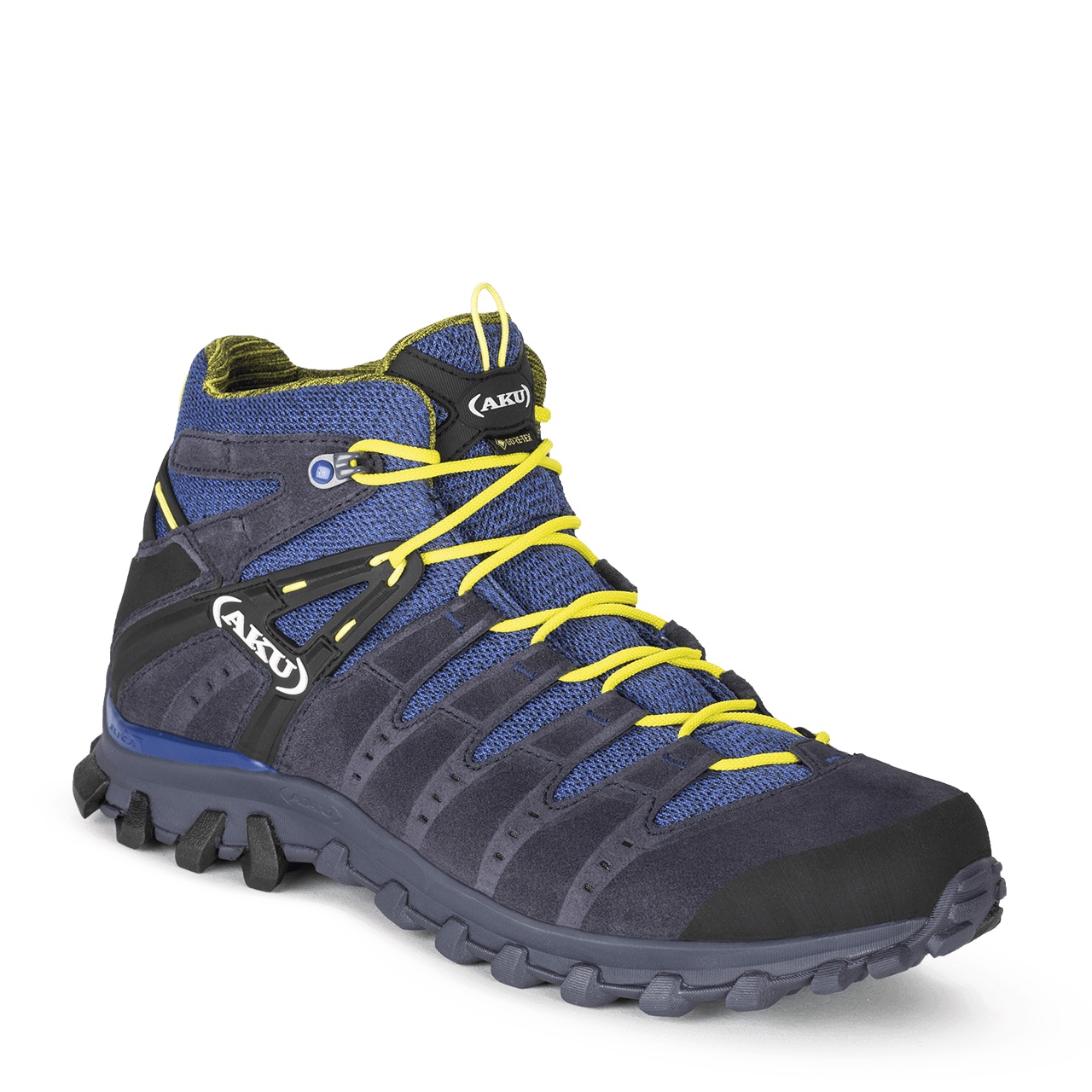
Hiking Shoes B1 Class
This kind of Alpine Hiking Boots are good choice if you go in mild terrain. The sole is light so it is not fit for stony area but the protected ankle is ensuring some protection against injusries. Good for long walks and easy trekking.
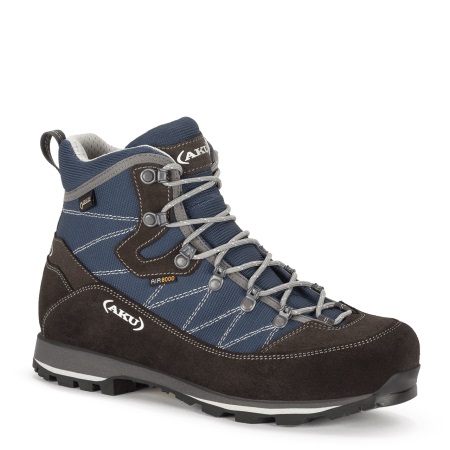
Hiking Shoes B2 Class
Your ideal Alpine Hiking Boots for most of the Trekking Alps packages. It has already a good sole, nice ankle protection but very comfortable. No need for blisters up in the mountains right? If you are hiking 4-5 Hours a day in most of mountain terrrain will be perfect!
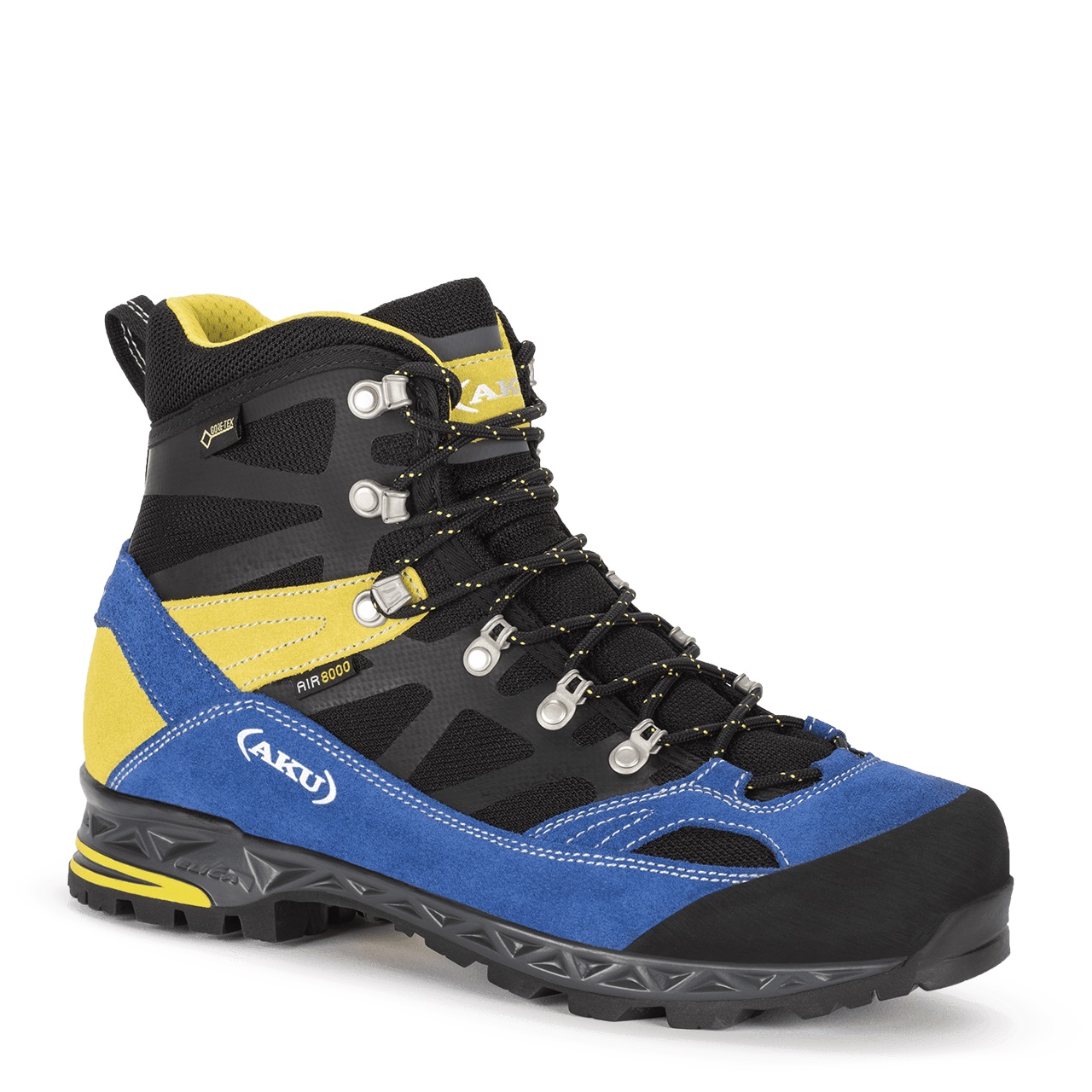
Hiking Shoes B3 Class
This Alpine Hiking Boots is very good if you are going to make a hard and harsh Trek. Where you need to protect the whole foot from stone, snakes, etc. It starts to be a bit stiff and can be too warm if you are going in lower elevation.
Class C - Off-trail Heavy Boots
As the name suggests, these boots are designed and intended for rough terrain. They have features such as toe caps, rugged soles, and provide extra shock absorption. Inner membranes often feature Gor-Tex® or other multi-purpose materials. Some variants are compatible with crampons for mountaineering. They have a sturdier construction and so need to be broken in before they can be worn on the rugged terrain of a hiking trail. In order to prevent injury to the feet and ankles, they have to be worn enough to fit comfortably and securely around the contours of the feet. The construction of these boots is intended to give maximum support and shock absorption while remaining water resistant/proof and breathable. The increased weight and stiffness of these boots require getting used to and training.These trekking boots are light but still pretty technical. They are especially designed for vie ferrate and alpine traverse routes. For trekking they are suitable and comfortable. Excellent for the most difficult trekking (4/5 difficult and 5/5 very difficult) above 3000 meters and where an excellent grip is required. Maybe a bit too heavy for a day hike or an easy summer hike but these are so comfortable and protective of your feet and ankles that you’ll be inclined to use them in any conditions. They’re a alpine hiking boots fit for all kinds of environments where crampons are not required. On the Trekking Alps scale they are fit for 3/5 medium, 4/5 difficult and 5/5 very difficult. If you have problem with your ankles and need very good ankle support these are the right boots. The very high cut provides the best protection against a twisted ankle. These are not suggested for our Trekking Alps experiences unless you have ankles problems because they are so heavy.expecting you to have for your hiking in the Alps.

Trekking Boots C1 Class
These Alpine hiking boots are pretty technical and light. They are especially designed for vie ferrate and alpine-style normal routes. For trekking they are good and comfortable. Excellent for the most difficult trekking (4/5 difficult and 5/5 very difficult) above 3000 meters and where an excellent grip is required.
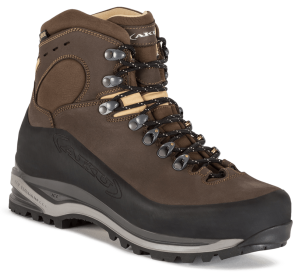
Trekking Boots C2 Class
Too heavy for day hike or summer easy hike but is comfortable and very protective for your feet and ankle that you’ll be inclined to use them in any conditions. A Alpine Hiking Boots fit for all kind of environment where it is not required crampons. For Trekking Alps scale fit for 3/5 medium , 4/5 difficult and 5/5 very difficult.
Class D - Mountaineering Boots
These are the Alpine Hiking Boots that you would use to climb big mountains in Europe and other regions. They are often used in combination with crampons and typically have special attachment points at the top of the sole, in the back in both for securing crampons. The soles are very rigid and they are usually very warm as they are intended to be used also in winter in high mountain environments. These boots work best for ice climbing but are understandably uncomfortable for long hikes. This is why usually during mountain expeditions Class A shoes are used to approach the ascent. Mountaineering boots have additional insulation to protect against lower temperatures. These boots actually cross over the classification from Hiking into Mountaineering. They are meant to be worn for mountain climbing and the roughest hiking conditions imaginable. These Alpine Hiking Boots in this case are actually fit for Mountaineers featuring the semi-automatic crampons. They are pretty warm and fit for peaks of 4000 meters in the Alps. If you wanted to climb Mont Blanc or Gran Paradiso, these are the kind of boots you’ll need. For our treks they are definitively too much. Same as above but they have automatic crampon attachment. These kinds of boots are for semi-professional people climbing peaks over 4000 meters or climbing ice waterfalls during the winter. Way too much for our trekking in the Alps. But if you become a super mountaineering expert this is what you’d need to buy!
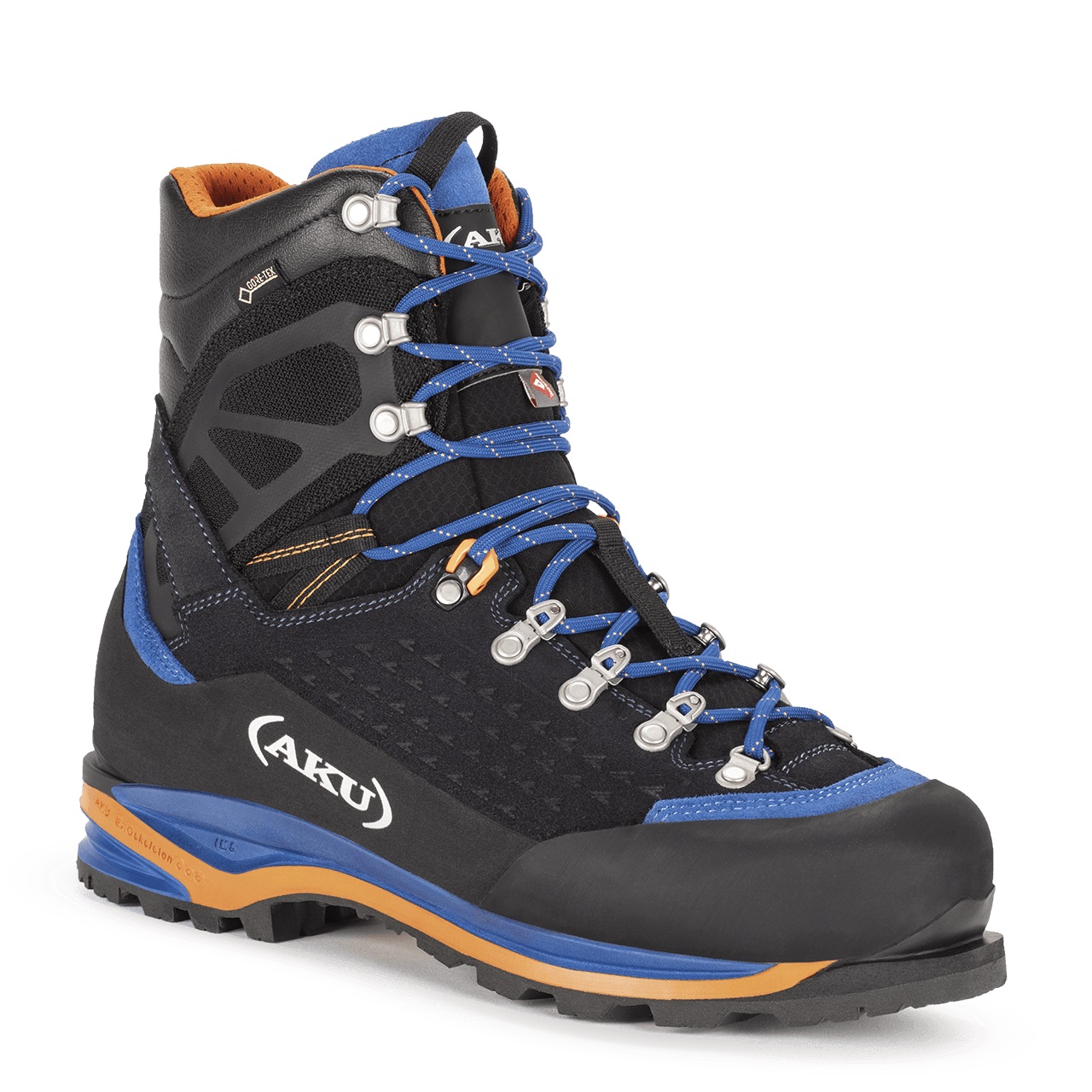
Trekking Boots D1 Class
This Mountaineer boots have the possibility to attach semi-automatic crampons. They are pretty warm and fit for 4000 meters peak in the Alps. If you want to climb Mont Blanc or Gran Paradiso, this is the kind of boots you’ll need.For our treks they are definitively too much.
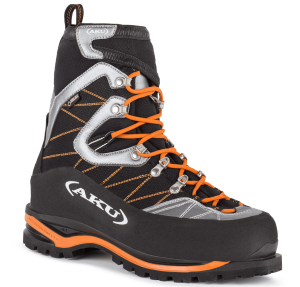
Trekking Boots D2 Class
Same as before but they have automatic crampons attachment. These kind of boots are for semi-professional people climbing peaks over 4000 meters or climbing ice waterfall during the winter.Way too much for our trekking in the Alps. But if you become a super expert this is what you’ll need to buy.